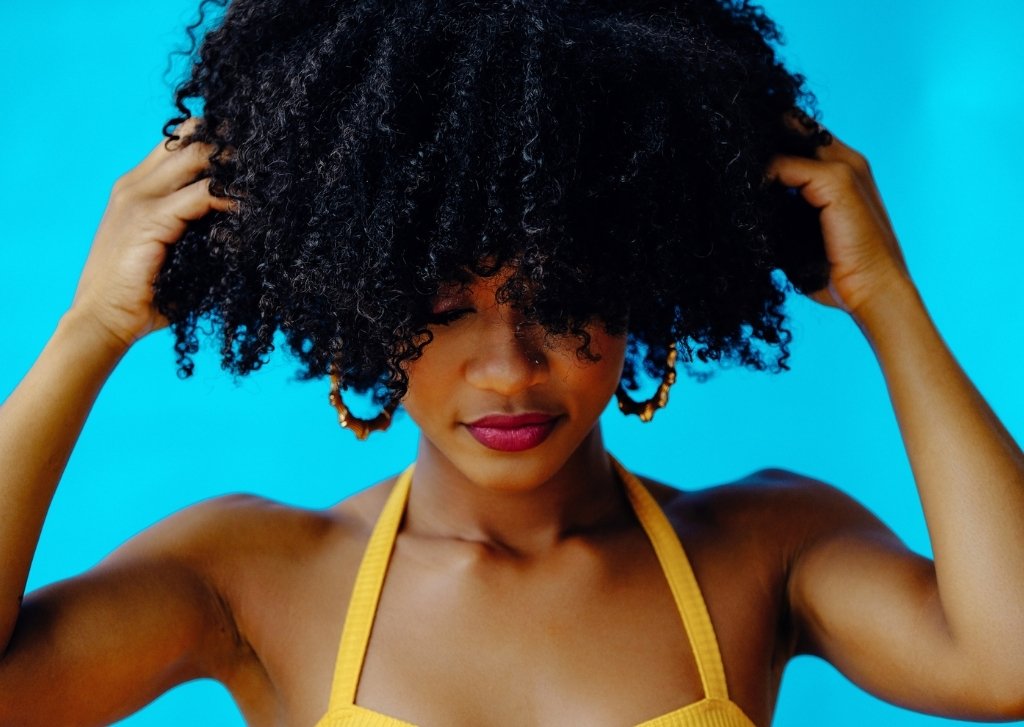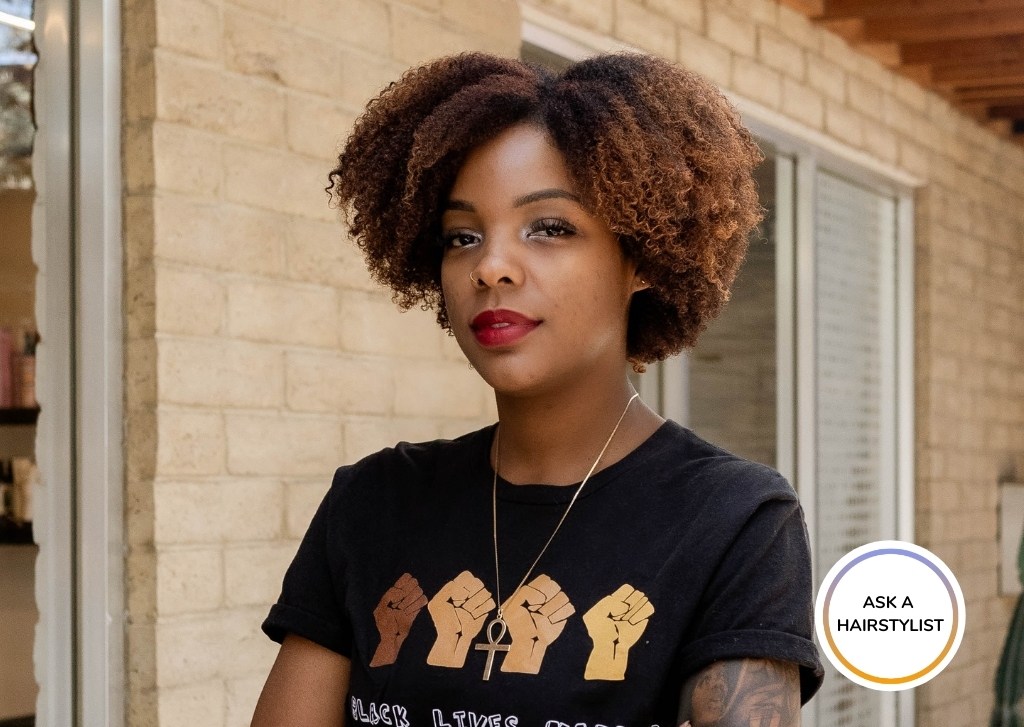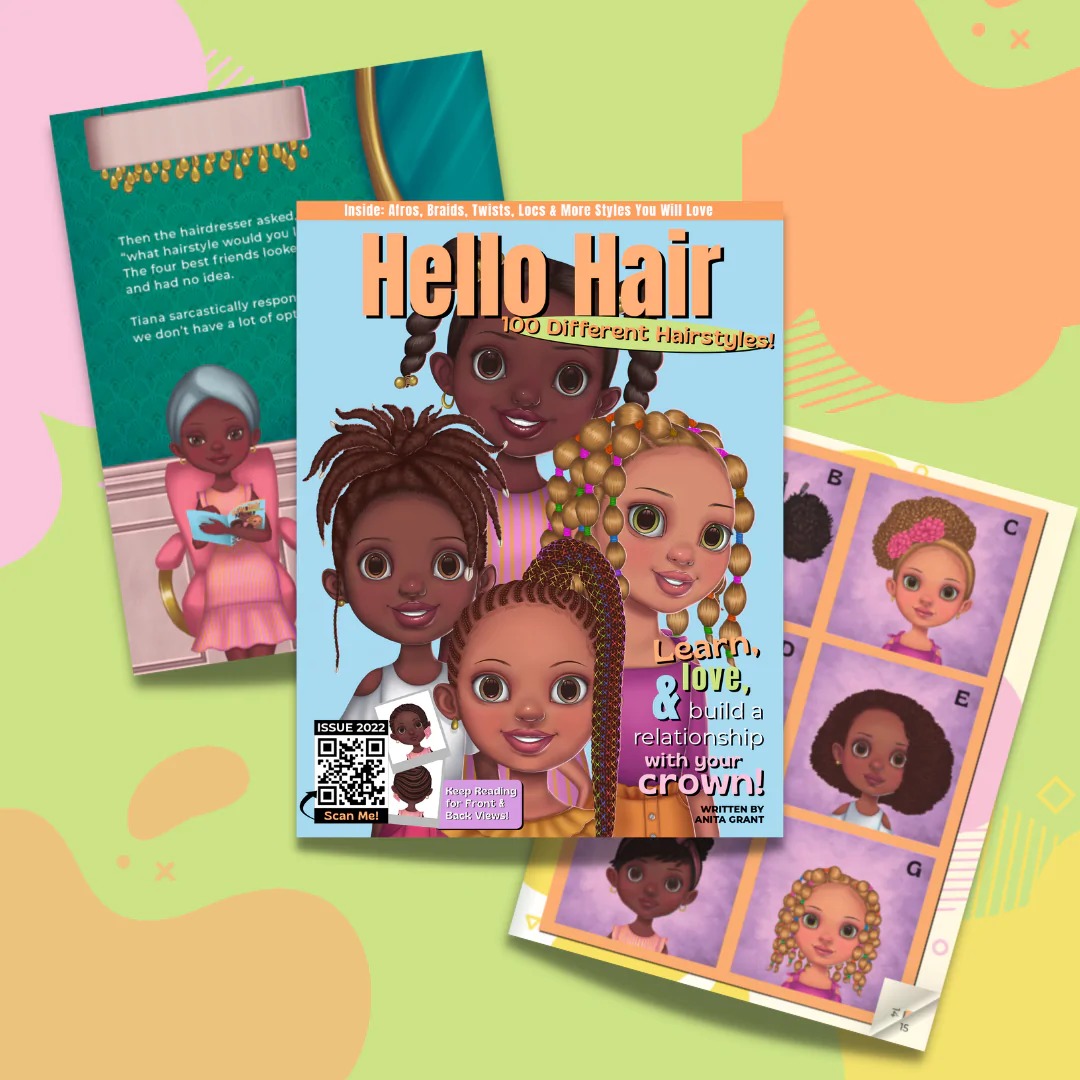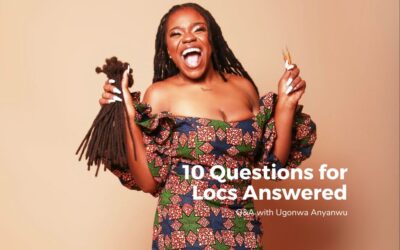Martina Nicholas at Sunflower Curls gives her perspective.
At my studio, Sunflower Curls, hydration is in every single conversation. It’s the most asked question, “how do I keep my hair hydrated?!” And the biggest complaint is “My ends get soooo dry!”
Hydration is the key to all things natural hair. It gives your coils that soft, weightless bounce. It helps your hair strand retain curl all the way to the ends and strengthens your hair’s elasticity or ability to bounce back into shape instead of breaking off. Most problems that everyone is encountering can be solved with more water in some way or fashion. If you bear with me and keep an open mind, I’ll give you some tips and tricks for increasing water absorption in the hair strand, which over time, will keep your hair hydrated.
A consistent routine
Your first step is coming to terms with the fact that for long-term healthy hair, you need a consistent routine. Make time to care for your hair. Not just co-washing after 8 days, hoping for the best. Seriously, for the best results, you will have to make your hair a priority. I’m not saying you need to spend 3 hours a day on your hair, but I will be giving you the tools to use to develop a routine suitable for your lifestyle.

Water is key
Secondly, let’s really talk about water. Water is the key to life. It carries nutrients and oxygen to your cells. It helps you eliminate waste. It’s what gives your skin that glow on a good skin day, and these are just to name a few things!
Water is not only the main ingredient, it is THE ingredient. The star of the show. The facilitator, the mediator, the one making everything else run smoothly. Without enough water, you’ll likely have a lot more frizz, lack of definition, and your sets won’t last more than a day or two.
So how much water does your hair need?
Well, that depends.
I encourage you to look into learning your hair’s porosity. Porosity is the ability of your hair strand to absorb water. Learning your hair’s porosity – low, medium, or high – is great because it helps you focus on product choices and techniques that are more suitable to help your hair absorb water.
For example, if you’re low porosity, that means your cuticle layer is basically closed. This makes it hard to get water and products into your hair strand. Try using warm water (warm, not hot) when cleansing and conditioning. The warmth helps open up the cuticle to allow some absorption into the hair strand. Steaming your hair is also a great option to help water and products penetrate that strong cuticle layer.
You can also use a squeezing motion (like squeezing a sponge) through your ends while you are rinsing to help your ends absorb water.
Of course, getting enough water in your hair is a must but you really need to also look at how much water you’re getting into your body daily as well! If you’re not drinking enough water, no amount that you rinse your hair with will get you sufficiently hydrated. It has to happen from
the inside out to support what we are working on, on the outside.
The Wash Cycle – the process of cleansing, conditioning and detangling before products – things like a longer rinse time, combined with the sponging method, will allow your hair to absorb more water. Starting off with more water before applying products allows more softness and slip.
When conditioning, work in sections, adding a little water to your hair after applying the product to allow deeper penetration into the hair strand. Use a pulling motion from root to end to work in your conditioner. Focus on how your hair feels. This will push the products into your hair strand, create more smoothness and over time, more hydration. By doing this, your hair should feel smooth to the touch, be visibly less frizzy, and your curls should clump together better. The results are immediate, but longevity comes with consistency and patience.

Using the right products is also key
Products that are water-soluble (meaning water can penetrate through them) and are free of silicones, parabens, and sulfates, all help your hydration levels. Sulfates strip the natural oils from your hair and scalp, while silicones and parabens give the appearance of being healthy – soft and shiny but coat the hair strand after multiple uses blocking water from penetrating into the hair.
Before we break down using oils, let’s talk about the difference between Hydration and Moisturizing.
Hydration is the process of absorbing water into your hair strand while Moisturizing locks moisture into the hair strand. Hydration comes from water, while you can use products to moisturize. Here’s where things can get a little confusing. Oil is often understood to hydrate, but it doesn’t. Oil does not hydrate hair. It moisturizes which supports the initial hydration happening from water.
Oil is a sealant. Oils have fatty acids that help replace lipids in your hair strand which are lost due to chemical treatments and heat styling. Those lipids help seal or smooth the cuticle making the hair lay smoother, less frizzy, and shiny. Oil also seals in what you already have on your hair. If you’ve heard of the LCO or LOC methods then you know the “O” stands for oil.
Now, let’s go back to porosity. Oils are great as a sealant for those with high porosity hair, which is when water is easily absorbed and released from the hair strand. Oil provides a barrier to keep water in. It is important to know when to use oil because oil and water don’t mix. If you’re overusing oil you are making that barrier thicker and blocking water absorption. If you love oils, take a look at your hair next time before you wash. If you wet down your hair and see little beads of water bead up, then roll-off, they are being repelled by the oil on your hair!
A clarifying shampoo is a great restart to get your hair strands fresh. Moving forward, only use oil to seal!
Protective styles are one of my favorite ways to keep hair hydrated. This doesn’t always mean a trip to the hair salon!
A two-strand twist, flat twist, braid out, Bantu knot set, etc are all still considered protective styles. They keep your hair detangled and sealed to the ends. This helps keep moisture in the hair strand and prevents over manipulation or over styling of more fragile ends.
Protective styles are not a one-and-done style though. Especially extended styles like braids, twists, faux locs, etc. Be sure to use a leave-in conditioner on the areas that you know contain your natural hair and continue with your wash cycle!
Water is the only way true hydration happens.
Even with all of this information, the biggest key is consistency. All of this means nothing if you don’t do it. It will work every time, but your results won’t be long-lasting and none of us want that shoulda, coulda, wash and go.
The shoulda hydrated, coulda been consistent look. We all want luxurious, juicy, coils and hydration is how we’re gonna get there! All of these tips are achievable and can be added to your regular routine or substituted for habits that may not have been the best in your old routine. Take it one Wash Cycle at a time and realize it’s about consistency and not perfection.
You got this, I promise!
Martina Nicholas is a black curl specialist and educator based in Phoenix AZ. Her passion is helping you learn how to successfully care for your hair without feeling overwhelmed or defeated. Learn more about Martina here




